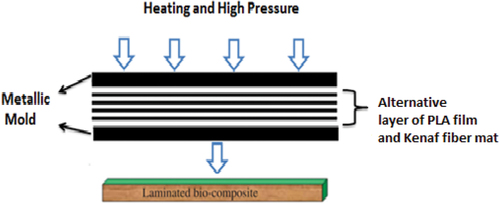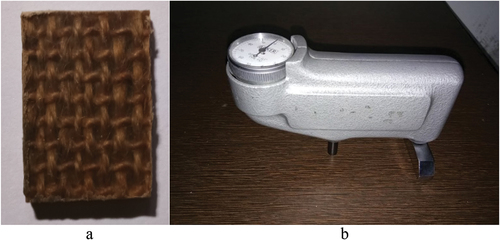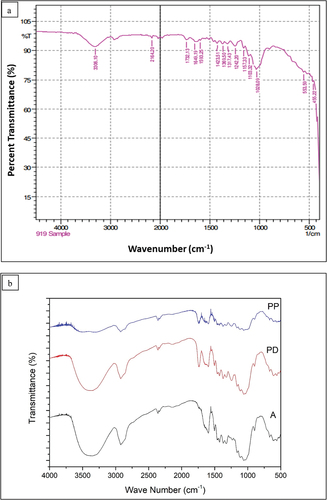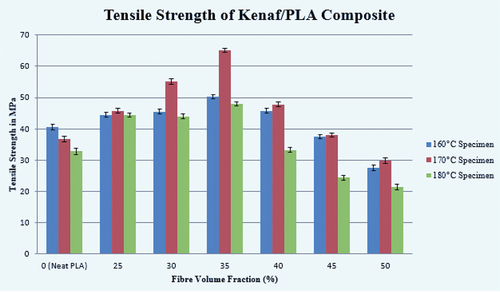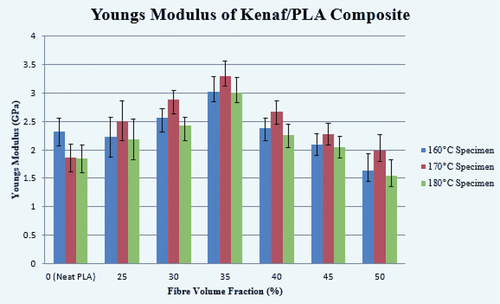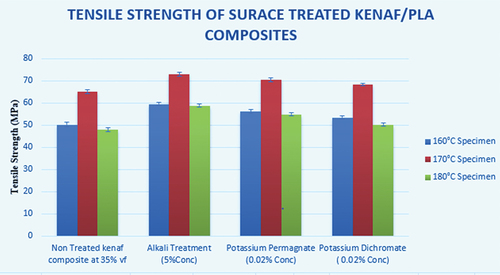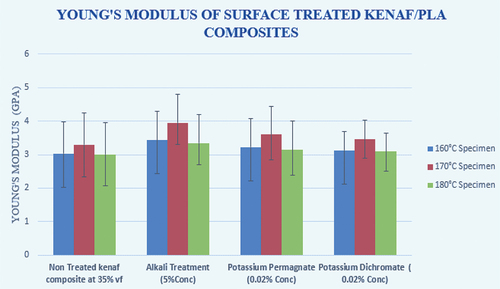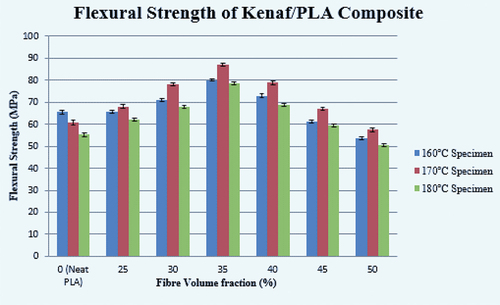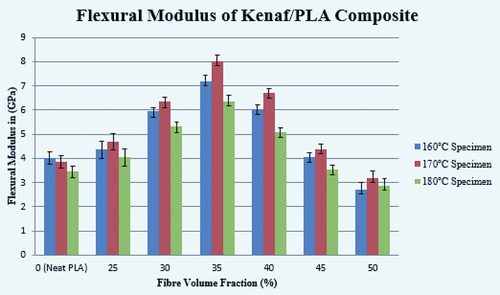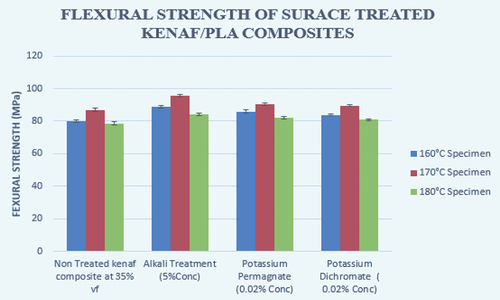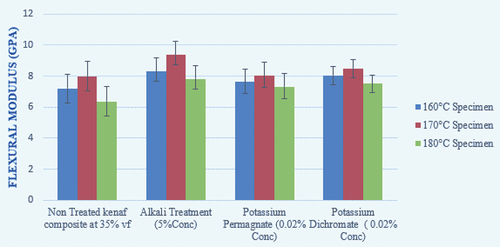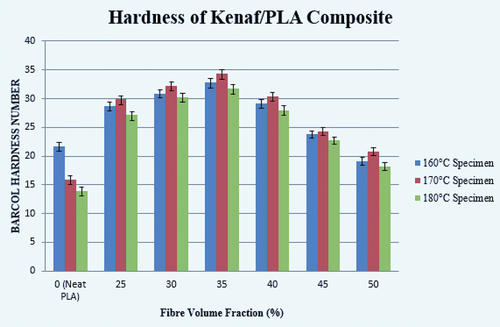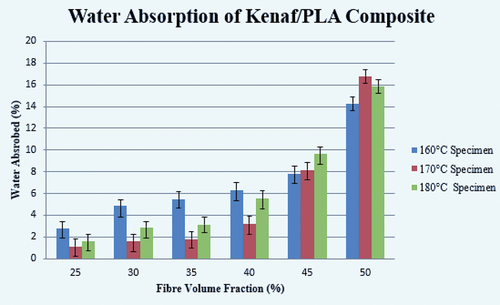Figures & data
Table 1. Properties and its magnitude for polylactic acid (Jaiinder, Singh, and Dhawan Citation2019b).
Table 2. Properties and its magnitude for kenaf fiber (Jaiinder, Singh, and Dhawan Citation2019b).
Figure 1. Surface treatment of kenaf fiber with a). alkali b). Potassium permanganate and c). Potassium dichromate solutions d). Alkali treated kenaf/PLA composite.
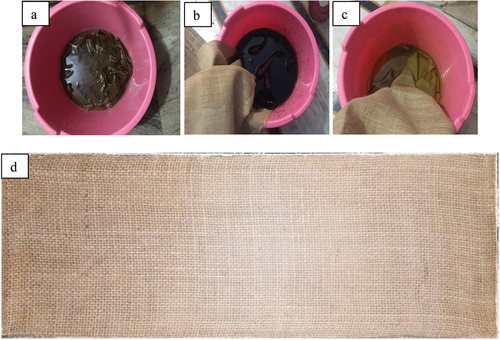
Table 3. FTIR transmittance readings for untreated and surface-treated kenaf fibers.
Figure 7. SEM images of tensile failed specimens of kenaf reinforced PLA-based bio-composites for (a) 160°C (b) 170°C and (c) 180°C at 500× magnifications respectively.
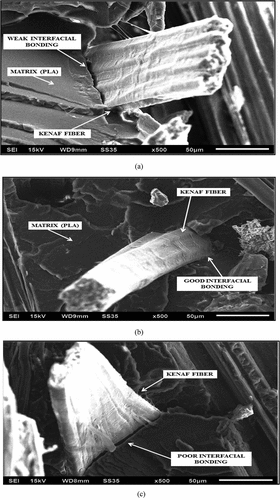
Figure 8. Tensile fractured Kenaf/PLA composite specimens as depicted in a SEM picture that was obtained at 170°C with a) 35% fiber volume percent, b) 50% fiber volume percent at 750× magnification respectively.
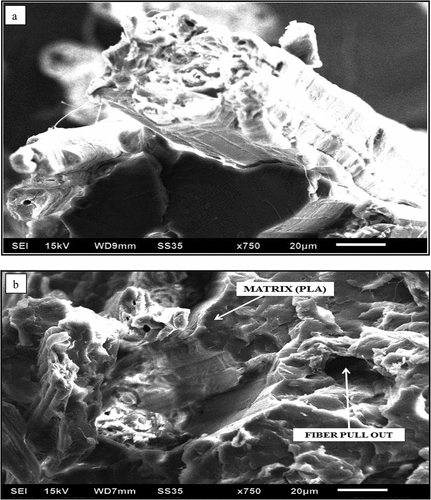
Data availability statement
My manuscript has no associate data.

